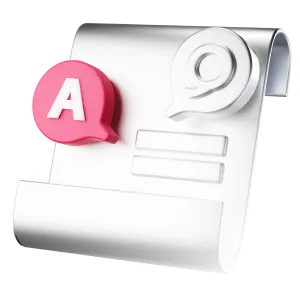On average, the cost for a wheel alignment service typically ranges from $50 to $200. Wheel alignment costs depend on several factors, including your location, vehicle and the type of alignment service required.
Alignment work on luxury vehicles or those with specialized suspension systems may cost more.
This isn’t the kind of fix you could consider doing yourself because very special equipment is required.
Factors that affect wheel alignment costs
Wheel alignment costs vary by location, vehicle and the type of garage performing the service. A driver who lives an hour outside of town and has an older sedan may pay much less for alignment than an SUV driver in a big city. Here’s how each of these factors affect the service bill.
Location
Wheel alignment prices are usually higher in urban areas and regions with a higher cost of living, where labor rates and overhead expenses are higher. You’ll find lower prices in rural areas with less demand.
Vehicle type
Larger, heavier vehicles like trucks and SUVs require more time and labor, meaning their alignment services are more expensive than smaller cars. You’ll also pay more if you drive a car with a complex or independent suspension system, like those in luxury vehicles or performance models. These models may need specialized equipment and expertise, which come at a higher price.
Because customizations like lifted suspensions or aftermarket wheels can make for a complex alignment process, those vehicles’ alignment services also cost more.
Service provider
Dealerships usually charge more because the work is performed by factory-certified technicians and a dealership’s overhead is more expensive. Independent repair shops offer lower rates with personalized service, while national chain service centers may provide mid-range pricing along with discounts, coupons or lifetime alignment packages.
Shops with certified technicians and advanced alignment technology may charge a premium but offer a more precise result.
What is wheel alignment?
Wheel alignment is the process of adjusting your vehicle’s steering and suspension systems so that your wheels are perpendicular to the ground, parallel to each other and make even contact with the road. Proper alignment ensures that your car handles well and that your tires wear uniformly.
A wheel alignment service generally includes adjustments of each wheel’s toe, camber and caster, as well as the axles’ thrust angles. Here’s what each of those mean.
- Toe: A tire’s toe measures whether the wheel is perfectly straight or turns in or out.
- Camber: The camber is the vertical angle of each tire when viewed straight on. It shows whether the tire leans inward or outward.
- Caster: The caster is the steering axis angle when viewed from the side, which can lean forward or backward.
- Thrust angle: The thrust angle is the angle between the vehicle’s geometric center line and the rear axle.
Alignment keeps your car steering straight, eliminates shuddering or shaking due to uneven tire movement, and ensures efficient power delivery to the wheels.
Misalignment can happen for many reasons. If you hit a pothole or curb, or get in a minor accident, it may throw off your vehicle’s alignment. Misalignment can also be due to general wear and tear of your tires and suspension systems, or simply installing brand new tires to the car.
Types of wheel alignment and their cost
There are three types of wheel alignment services, and the one you need depends on your vehicle and why you need the service in the first place. Some cars may only need adjustments to the front or rear wheels, while others require alignment on all four wheels.
Two-wheel alignment
A two-wheel alignment adjusts two wheels of the vehicle, usually the front axle, and is often called a front-end alignment. You may only need a two-wheel alignment if one axle looks good upon inspection but the other shows problems.
Since this type of alignment only focuses on one axle, it is typically more affordable than a full alignment. According to Kelley Blue Book, a front-end alignment generally costs $50 to $100.
Four-wheel alignment
A four-wheel alignment adjusts all the wheels of a vehicle. You may need this instead of a two-wheel alignment if you have a four-wheel-drive vehicle or one with an independent rear suspension system.
While standard four‑wheel alignments fall mostly in the $100 to $200 range, be prepared for premium pricing on higher-end vehicles or at dealership service centers.
Thrust alignment
A thrust-angle alignment ensures that all four wheels are in line with one another, helping correct real axle misalignments that might cause your vehicle to pull to one side, shudder or shake while driving, or unevenly wear at your tires or suspension system. This may be necessary on vehicles with a fixed rear axle, where a four-wheel alignment isn’t possible.
On its own, this service typically costs $50 to $80 and focuses only on the rear wheel thrust angle. The thrust angle is also adjusted with four-wheel alignments. With a thrust angle alignment, your technician usually won’t make any camber or caster adjustments.
How often should you get a wheel alignment?
Wheel alignment is an as-needed adjustment rather than an expected maintenance item like an oil change. And, like many other automotive systems, the suspension controlling alignment is improving, lasting longer and requiring less maintenance. Still, it’s a good idea to get your alignment checked periodically or in the special circumstances listed below. Rocks and potholes can knock wheels out of alignment, so if you frequently drive on rough roads, you may want to get it checked more frequently.
Some mechanics recommend wheel alignment after you get new tires or replace specific suspension parts. If you haven’t noticed uneven wear on your prior set of tires, you can skip the alignment. But if you notice any of the following signs, it may be time for an alignment:
- Your vehicle pulls to one side while driving.
- The steering wheel is off-center when driving straight.
- You notice uneven or rapid tire wear.
- Your tires squeal excessively when turning.
Staying on top of wheel alignment service can help:
- Improve your car’s handling. Proper wheel alignment keeps your vehicle driving straight and responding accurately to steering. Misalignment can increase your risk of accidents by causing your car to pull to one side.
- Extend tire life. Misaligned wheels cause uneven tire wear, reducing the lifespan of your tires and requiring more frequent replacements. Regular alignments keep all tires wearing evenly and preserve tread depth and performance.
- Increase fuel efficiency. Misalignment can increase rolling resistance, which makes your car’s engine work harder and burn more fuel.
- Identify other issues. Regular wheel alignment can help you detect early signs of other problems within your suspension, steering and tire systems. This preventative maintenance can save you money by heading off problems before they get bigger and more expensive.
Choosing the right service provider
The right mechanic can get you back on the road quickly and charge an affordable rate. Here are the most important things to compare between mechanics.
Shop reputation: Look for shops with positive reviews and a good reputation in your area. Word-of-mouth recommendations and reviews on Google, Yelp and local forums like Facebook and Reddit gives you a peek into other drivers’ experiences, good and bad.
Experience and certification: Check if the shop employs experienced, ASE-certified technicians (Automotive Service Excellence). ASE certification is a widely recognized standard in the auto repair industry and ensures technicians have the training and expertise to perform accurate wheel alignments.
Warranty: Some shops offer warranties on their alignment services, guaranteeing satisfaction and free realignment within a certain number of miles if necessary.
Price transparency: Don’t assume the first quote you get is the best one. Get a detailed estimate from two or three mechanics to find the most competitive rate, and ask whether the shop has any discounts or coupons for alignments.

Stephanie Colestock is a professional writer, CFEI®, and licensed insurance agent specializing in personal finance. With over 14 years of experience, she crafts insightful and accessible content on a wide range of financial topics, including insurance, loans, credit/debt, investing, retirement planning, and banking.
Her bylines appear in top-tier publications such as TIME, Fortune, MSN, Business Insider, USA Today, Money, Fox Business, and CBS. Stephanie’s deep understanding of complex financial concepts and her ability to communicate them clearly have made her a trusted voice in the industry.
When she’s not writing, Stephanie enjoys SCUBA diving, reading a good book, and traveling the world with her family.

Annie is a writer and editor at Jerry with more than a decade of experience writing and editing digital content. Before joining Jerry, she was an assistant assigning editor at NerdWallet. Her past work has appeared in the Associated Press, USA Today and The Washington Post. Her work has been cited by Northwestern University and Harvard Kennedy School. Annie served as a spokesperson for NerdWallet during her time at NerdWallet and has been featured in New York Magazine, MarketWatch and on local television and radio stations.
Previously, she worked at USAA and newspapers in Minnesota, North Dakota, California and Texas. She has a bachelor’s degree in journalism from the University of Minnesota.

Phil grew up fixing lawn mowers, motorcycles and cars. He began his journalism career as a night police reporter in Chicago and Denver. Moving to Los Angeles, Phil ghost-wrote several how-to books about car buying. He then was hired by the consumer automotive site Edmunds.com where he worked as an “undercover” car salesman. This led to a series of articles called “Confessions of a Car Salesman.” Additionally, he wrote DIY articles about car maintenance and repair and took high-performance driving lessons on race tracks in Nevada and California. Later, he wrote a syndicated automotive column for Nerdwallet. He recently he authored the book Electric Cars: How to Get Rolling Today. For Jerry he will use his experience to help car owners make smart decisions about driving, repairing and maintaining their vehicles. Phil lives in Long Beach, Calif., and still enjoys turning wrenches and helping his son change the oil in his 2016 Mazda3.









